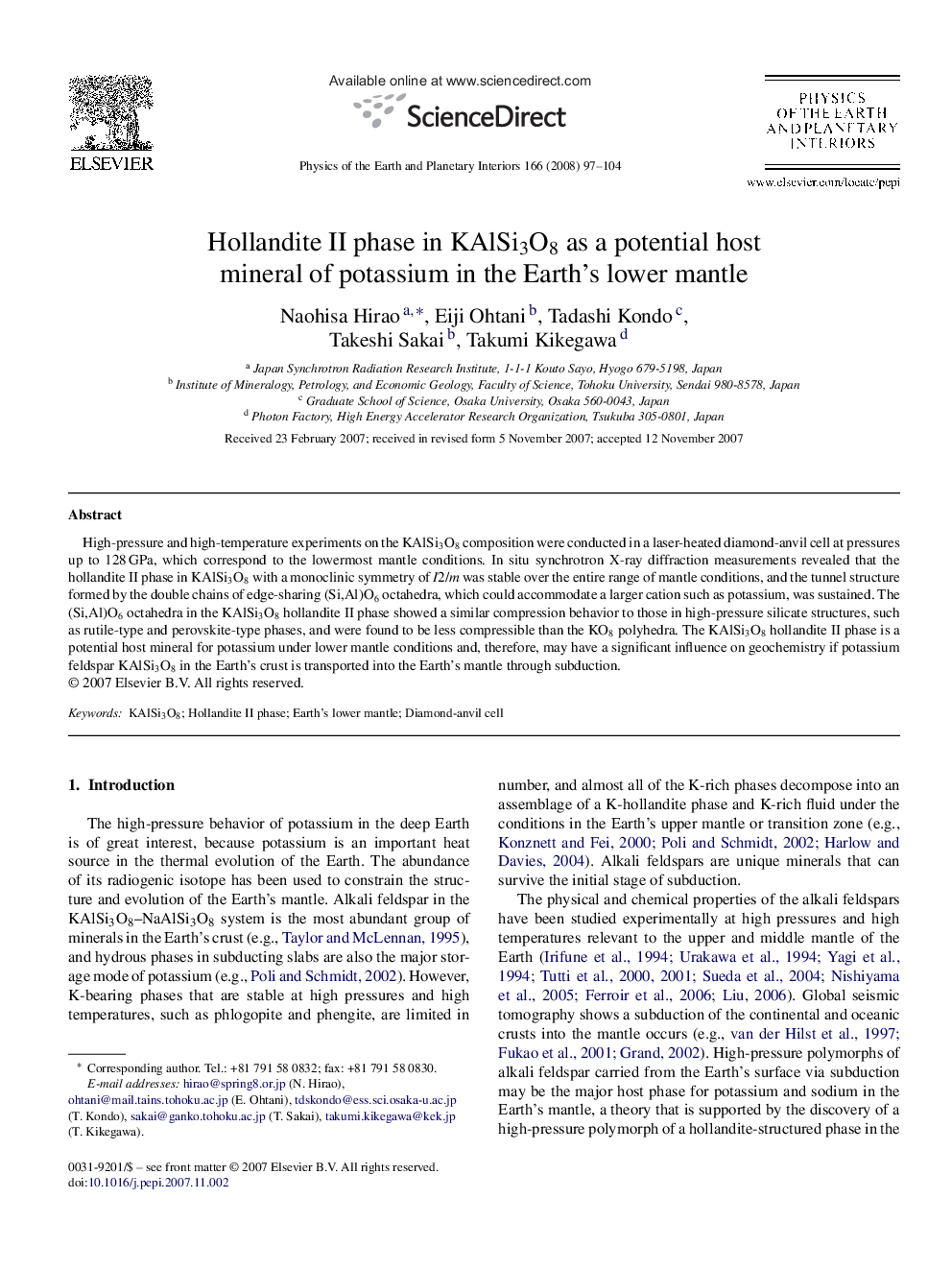| Article ID | Journal | Published Year | Pages | File Type |
|---|---|---|---|---|
| 4742823 | Physics of the Earth and Planetary Interiors | 2008 | 8 Pages |
Abstract
High-pressure and high-temperature experiments on the KAlSi3O8 composition were conducted in a laser-heated diamond-anvil cell at pressures up to 128Â GPa, which correspond to the lowermost mantle conditions. In situ synchrotron X-ray diffraction measurements revealed that the hollandite II phase in KAlSi3O8 with a monoclinic symmetry of I2/m was stable over the entire range of mantle conditions, and the tunnel structure formed by the double chains of edge-sharing (Si,Al)O6 octahedra, which could accommodate a larger cation such as potassium, was sustained. The (Si,Al)O6 octahedra in the KAlSi3O8 hollandite II phase showed a similar compression behavior to those in high-pressure silicate structures, such as rutile-type and perovskite-type phases, and were found to be less compressible than the KO8 polyhedra. The KAlSi3O8 hollandite II phase is a potential host mineral for potassium under lower mantle conditions and, therefore, may have a significant influence on geochemistry if potassium feldspar KAlSi3O8 in the Earth's crust is transported into the Earth's mantle through subduction.
Related Topics
Physical Sciences and Engineering
Earth and Planetary Sciences
Geophysics
Authors
Naohisa Hirao, Eiji Ohtani, Tadashi Kondo, Takeshi Sakai, Takumi Kikegawa,
